Liv Tandrevold Eriksen in the Beer Halls, Stavanger
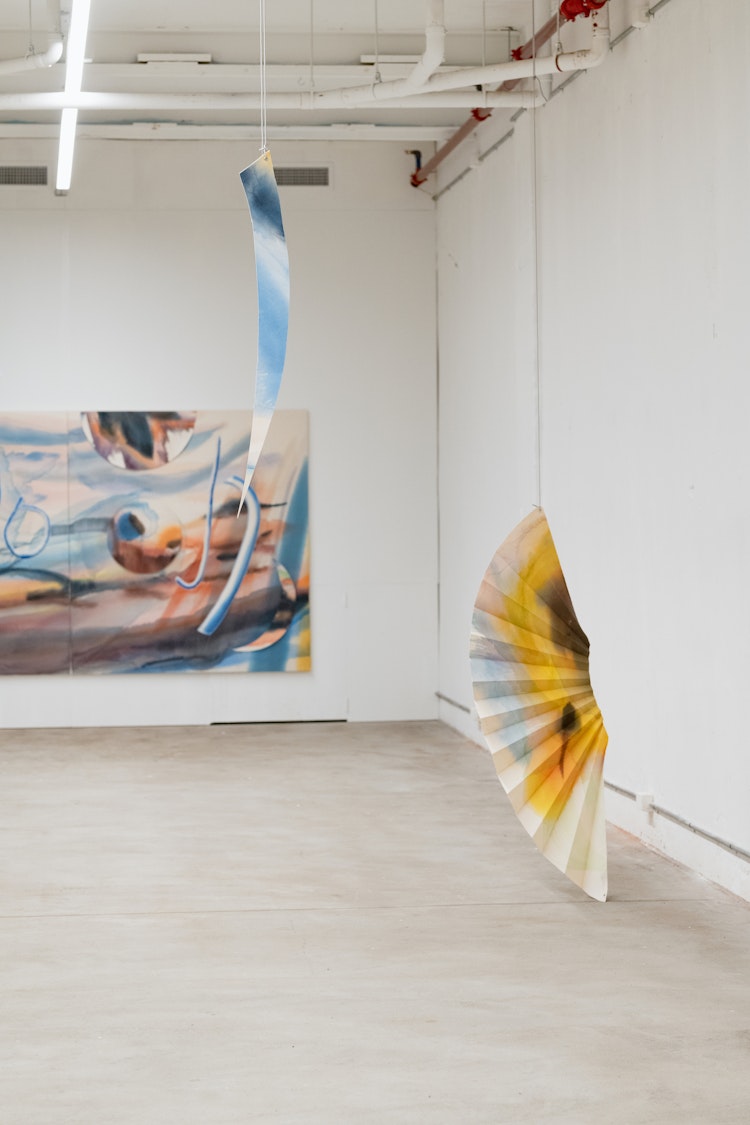

The exhibition consists of six solo exhibitions side by side in the Beer Halls in Stavanger, NO. With painting as their starting point, the artists work in a span between two- and three-dimentional works.
Liv Tandrevold Eriksen (b. 1976)
Henrik Olai Kaarstein (b. 1989)
Cato Løland (b. 1982)
Lars Korff Lofthus (b. 1978)
Markus Li Stensrud (b. 1983) and Ida Madsen Følling (b. 1983)
Ingrid Toogood (b. 1976)
The title is borrowed from Renè Magritte’s painting from 1927 «La table, l’océan et le fruit» and works as a focal point for all six exhibitions. Magritte’s surrealist point of view is illustrative for how description and designation changes the way an artwork is read. When a painting is exhibited as a sculpture, something liken to Magritte’s view happens; the perception of what the work can be, and has the potential to be is pushed beyond its given boundaries.

Water is a visible part in Liv Tandrevold Eriksen’s process. The diluted acrylic paint is seeping through the canvas, colours bleeding into one another, reacting with the canvas, making water marks, stains, puddles, and edges. When the water has evaporated, she starts the next layer, another one, and so on. Her strokes are translucent, and each application is visible without the opportunity to retouch, working as a documentation, a recording of time, the process, and the layers.
Painting is also the foundation for her sculptures, which are both flat and three dimensional. They are cut, stitched, folded, and layered physically, becoming reliefs and hybrids of simple forms and more complicated, intricate undefined figures, growing from the walls, the floor, and the ceiling. Tandrevold Eriksen sees the sculptural opportunities of canvas as a textile. Her painted canvases may end up as a sculpture, a collage or a painting, the definitions being as fluid as the water used in the process. Her motifs imply a fleeting and fluid landscape where the sky, the ocean and the horizon are upside/down and blurred, held up by familiar, elementary shapes calming the storm.

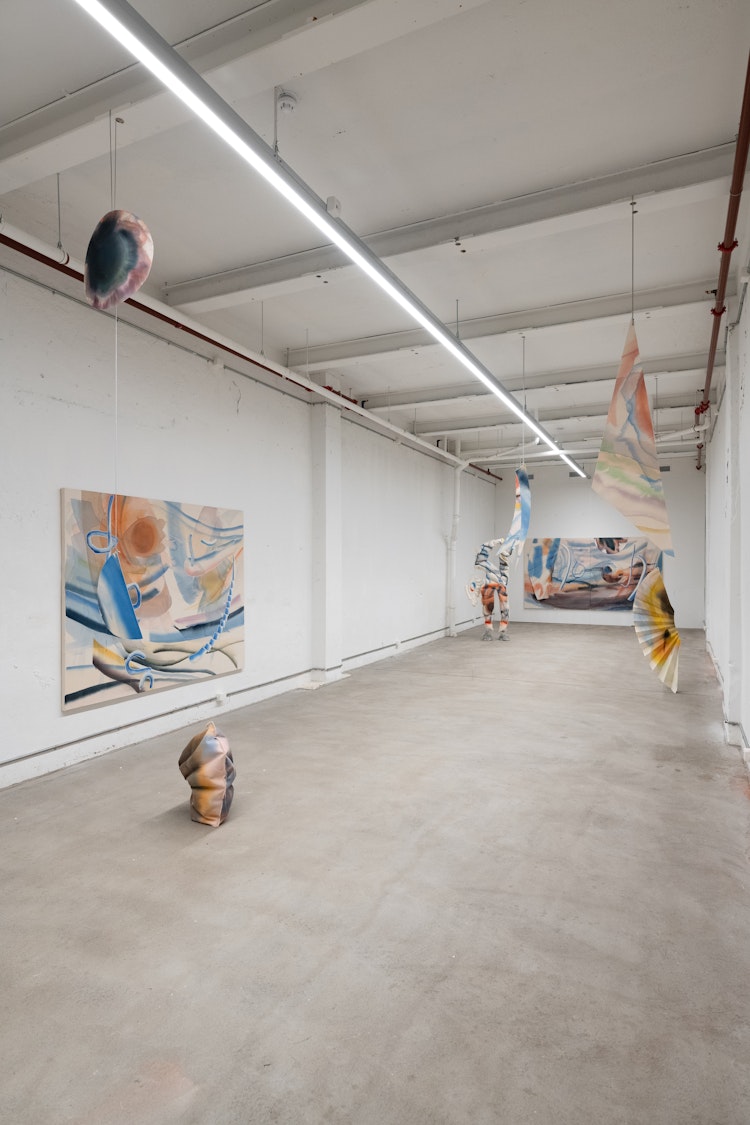
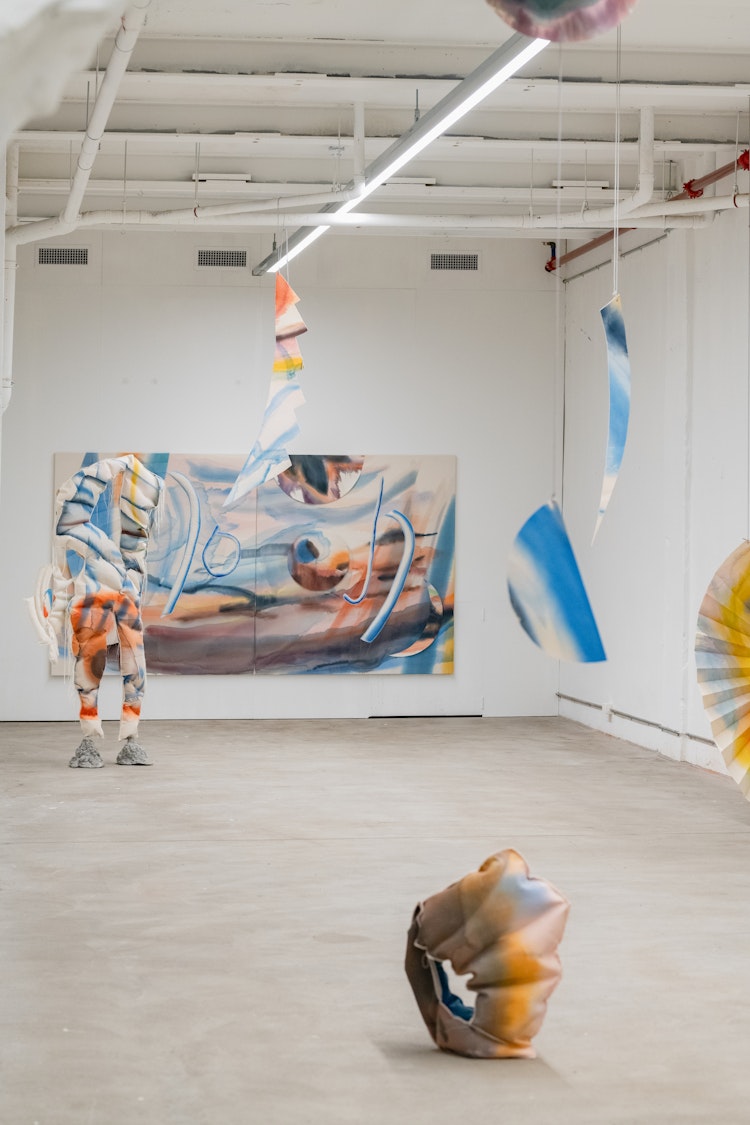
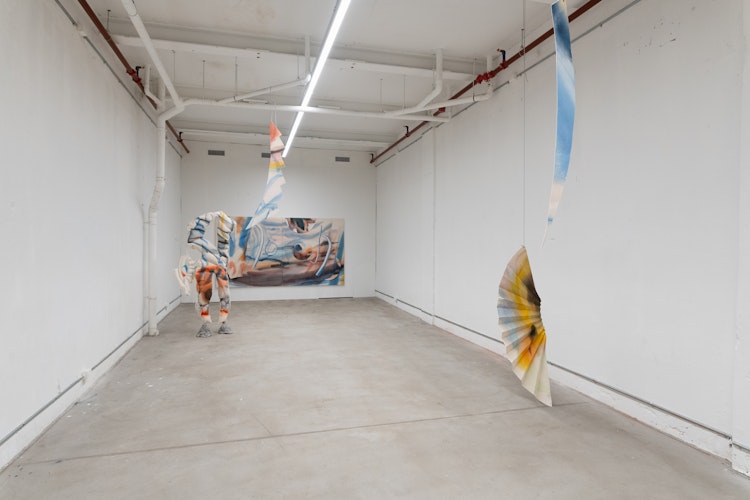
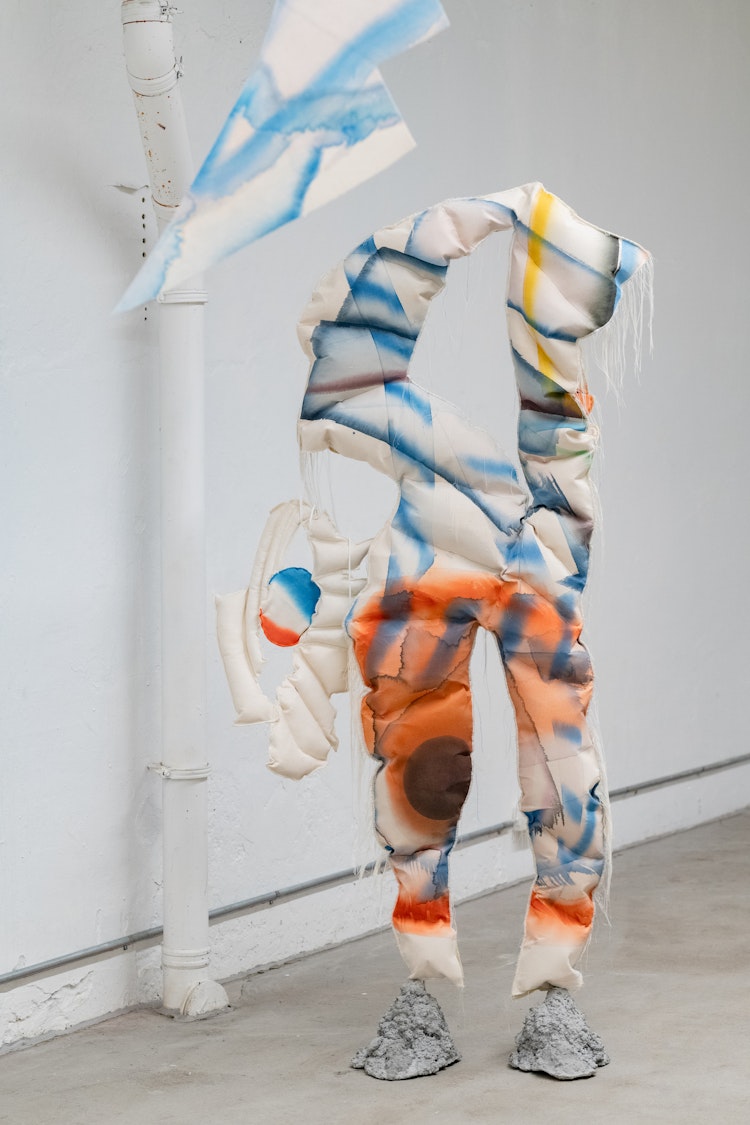
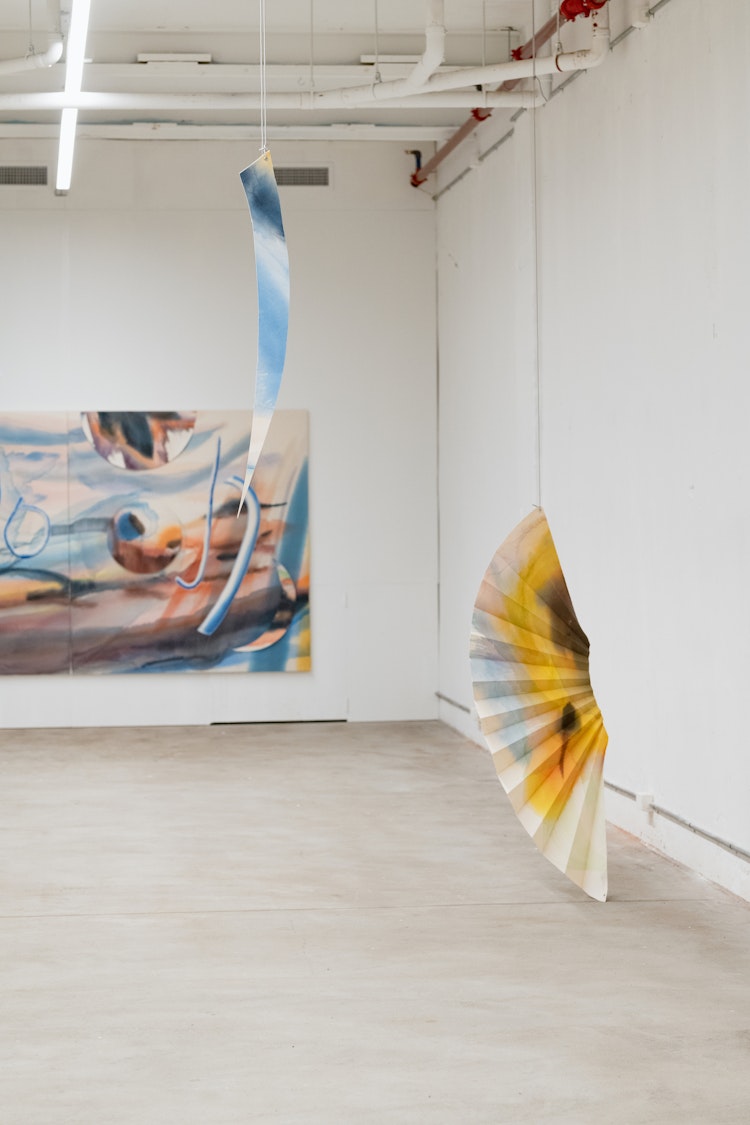

What are you looking for?